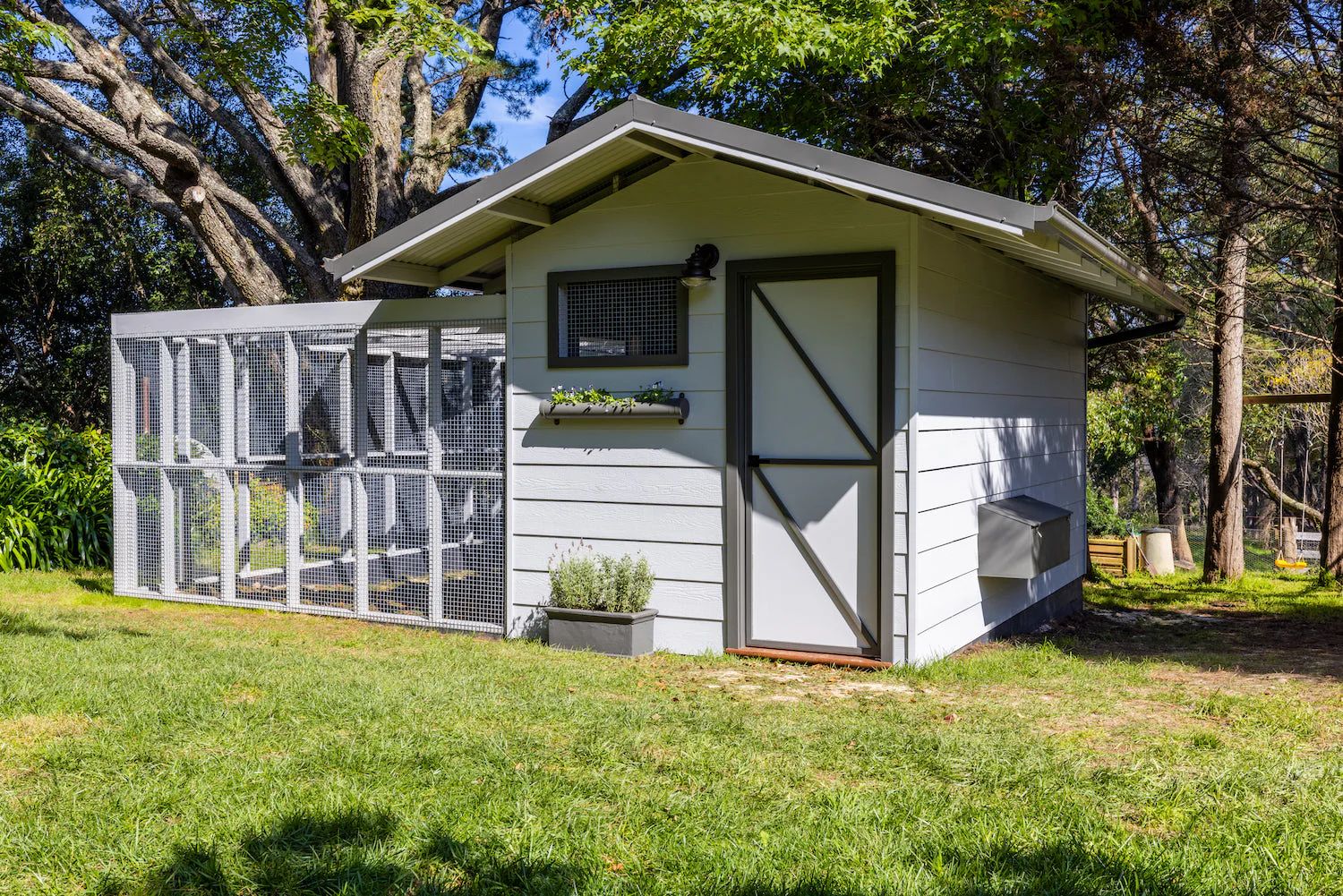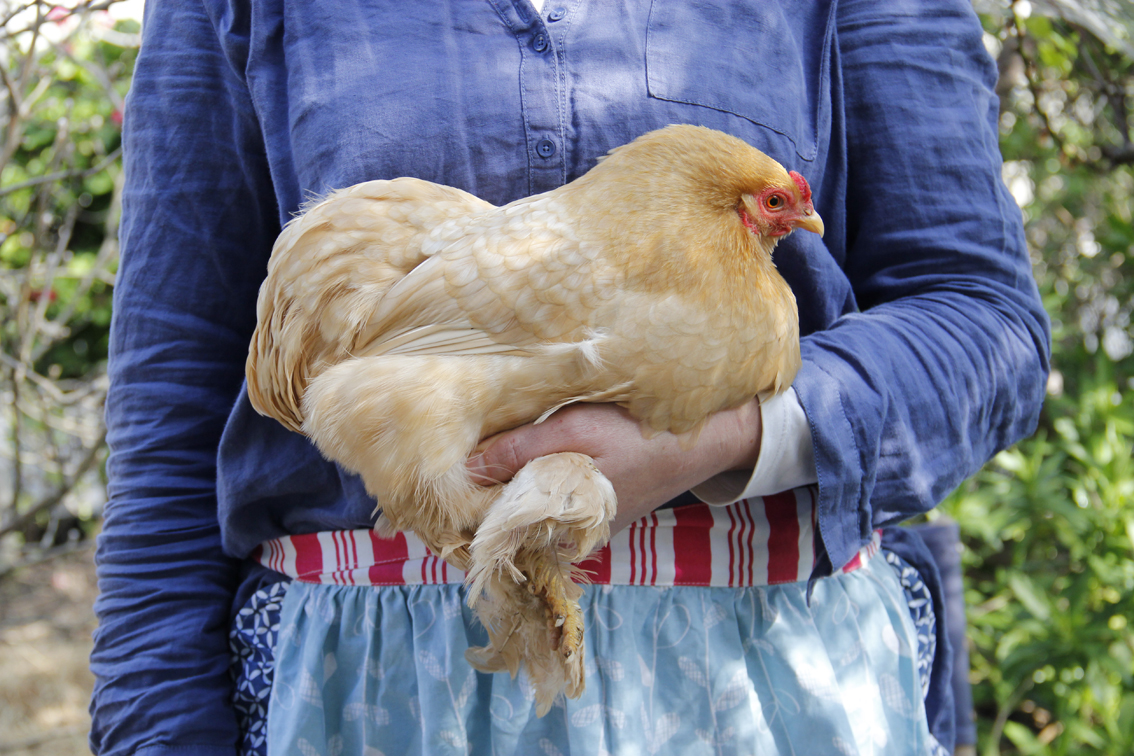Keeping Chickens: Tips for Happy, Healthy Hens
Notes prepared by Jessamy Miller, 2025
Chickens are easy livestock for small backyard farms. They are kept to lay eggs, as pets and for the table.
- A standard chook is normal sized.
- A bantam is smaller, two-thirds the size.
- Red layer hens live around 2-3 years, purebreds 6-8 years.
- Males are called roosters, females are pullets and hens and babies are chicks.
Did you know? Roosters aren’t needed for hens to lay!
There are many different breeds, colours, sizes, shapes and personalities! You need the right breed for the job – layer, pet or mama hen.
Laying
Some hens lay eggs every day, while others lay a few times a week, it depends on the breed.
- Older chooks lay less and then retire.
- Most chooks stop laying in autumn, so they can moult or shed and replace their feathers, then have a holiday in winter. This is natural and keeps them healthy.

Henhouse
Chooks are small and gentle so have lots of predators like foxes, cats, dogs and hawks. They need a safe predator-proof henhouse to sleep in at night.
Top tip: Set a phone alarm so you don’t forget to lock them up every night!
- You can add a wire mesh run to protect them in the daytime. It will also stop them digging up the garden and leaving poop everywhere!
- Make sure the henhouse has shade and gives protection from rain and cold winds.
- How big should a henhouse be? Big enough for chooks to express their natural behaviours like scratching and foraging, flying, dustbathing and some space to be alone: 50cm2 per bird.
Henhouse furniture
Important items to include in a henhouse include:
- Perches can be made from squared off timber.
- Nestboxes lined with straw. One nest per three hens.
- Wood shavings on the floor for soft landing, to absorb manure and make it easy to clean.
- In the run, chooks need a dustbath area so they can keep clean.
- A feeder and waterer.
Cleaning
- Move manure under perches to the compost fortnightly and add more shavings.
- Each season, do a full clean-out, wash with hot soapy water and add fresh new shavings.
Entertainment
Chooks are happier with activities and can include:
- Lots of hay or straw to scratch and forage.
- A dirt patch to dustbath in.
- A mirror for preening.
- Different perches, outdoor seats, rocks, tree stumps, podiums or platforms.
- A peck toy or xylophone to peck at.
- They can work in your garden! They love to dig up beds and remove weeds and bugs.
Friends
- Chickens are social and need to live in a flock to be healthy and happy – ideally keep three or more so they have friends to hang with.
- A chicken flock has a pecking order. This keeps chooks safe and everyone knows their place. The top hen is bossy, gets to eat first and pecks the others on the head. Make sure the bottom chook gets enough food!
- If you want to add new chooks, supervise them until they work out the pecking order!
Feed
- A nutritious diet means hens are healthy, satisfied, rarely get ill or feel naughty and are able to lay lots of eggs.
- The nutrition, vitamins and minerals in eggs come from the chook’s diet.
A healthy hen diet
- Layer pellets, grains, or mash, from a pet store. This is their brekky, lunch and dinner and provides all their nutrition.
- Healthy kitchen scraps are great for entertainment but low in nutrition – so are ideal as snacks. Chooks can eat most foods that are healthy for us to eat, but not junk food or rotten food. Examples include sandwiches, fruit, leafy vegies, cooked pasta and leftovers but no to chips, lollies, cake or raw pasta or lentils!
- Greens each day from your garden.
- Cool clean fresh water.
- Shell grit (shells) to make eggshells.
- Hard grit (small stones) to grind food.

Speak Chook Language
Chooks talk to each other all the time using 30 distinct vocalisations that are words.
- Cackle: when they lay eggs and when there’s danger.
- Growl and cluck: when clucky.
- Gackle: when discontented.
- Fast cluck: in anticipation of food.
Roosters tidbit and crow and hens tell their eggs when to hatch – Chooks tell you important stuff!
Tame and Relaxed Chooks
Chooks will be happiest and healthiest if they have good nutrition, plenty of space and are not bored or stressed. Being small and defenceless, chooks get scared easily.
- Be quiet, gentle and predictable.
- Talk to chooks in your animal voice – it’s reassuring and helps them get to know you.
- Try and avoid screaming or jumping!
- Be aware of consent – when a chook walks or runs away, she is saying no thank you!
- Build trust by sitting quietly with the chooks, holding food. Let them come up to you and walk away when they are finished. This allows the chook to choose. Some chooks may decide to hop on your lap and enjoy pats over time.
Training Chooks
Chooks are easy to train because they like to follow a routine and are motivated by treats. To get them to come when they are called, always call them to same way and give them a food treat when they come!
Chooks can’t be trained not to do a behaviour, so should never be punished.

How to Hold a Chook
- Thread fingers through feet, tuck head under your arm and hold wing down with your finger.
- This avoids squeezing any eggs inside her.
- Use your other hand to open the gate!
- Place her gently on the ground afterwards.
Today’s Action
This article & photos are by Jessamy Miller.
Follow Jessamy on Instagram: @sunimiller
Watch the recorded workshop video for Healthy Happy Hens here.


